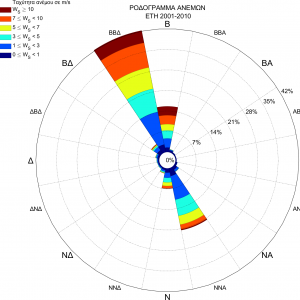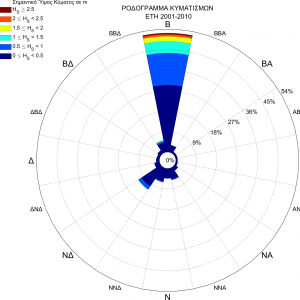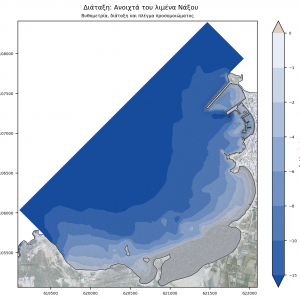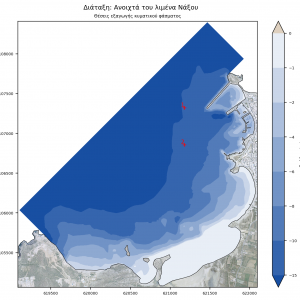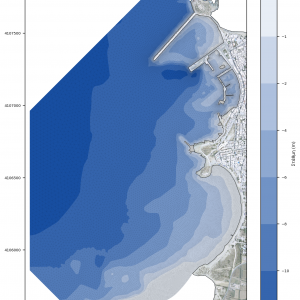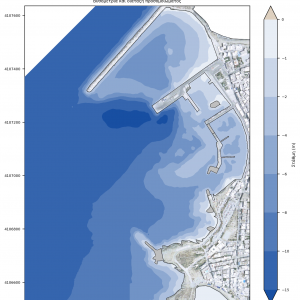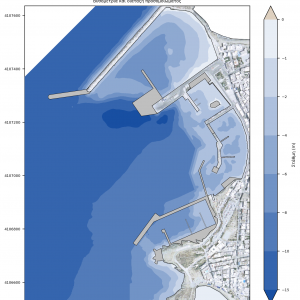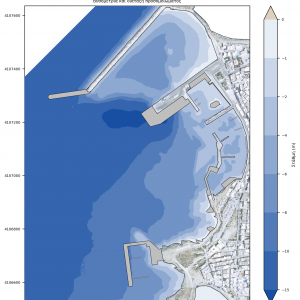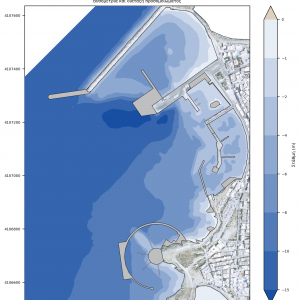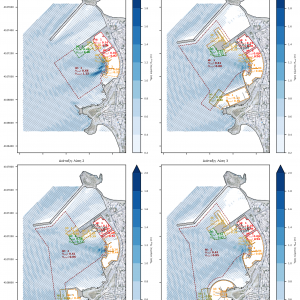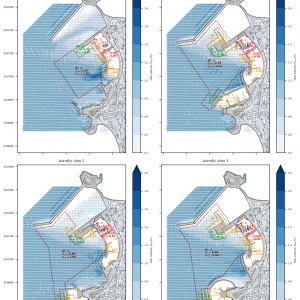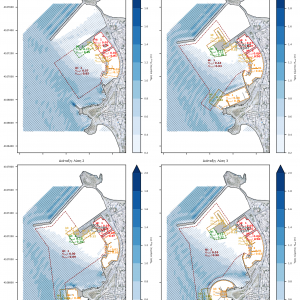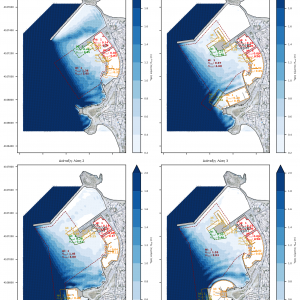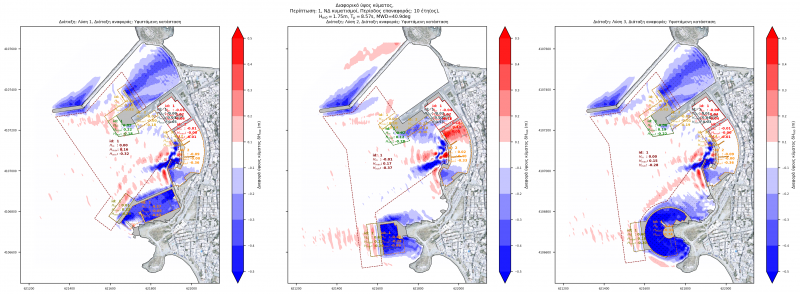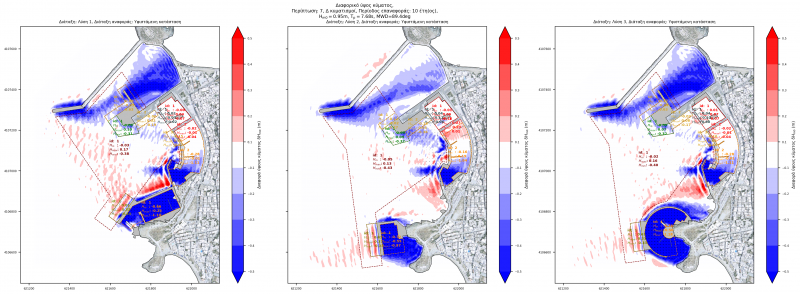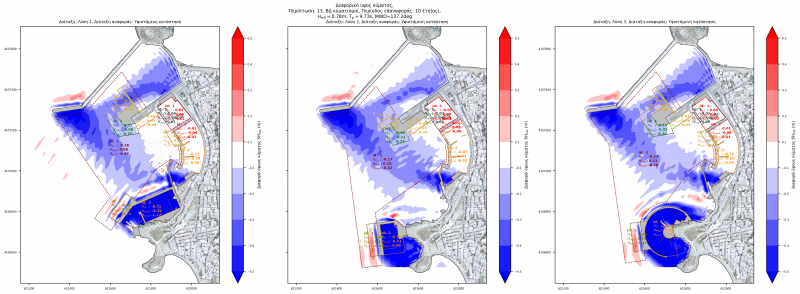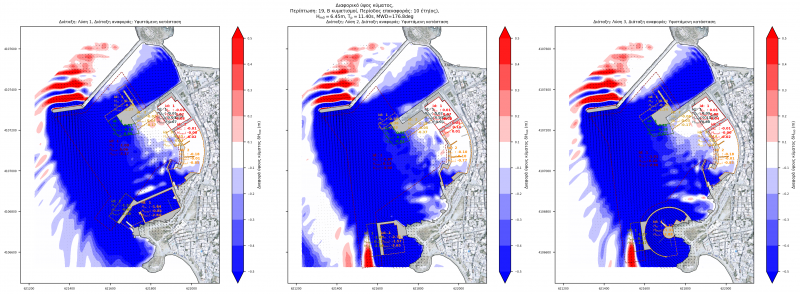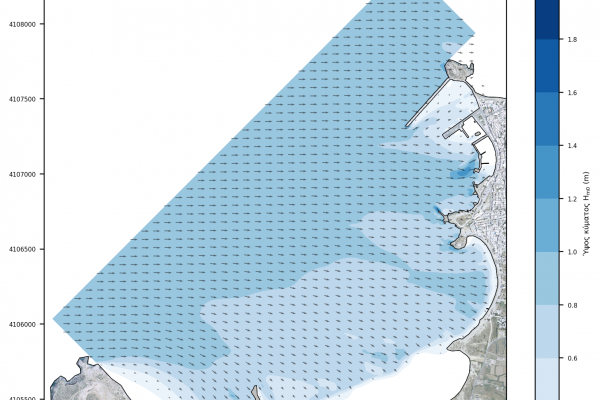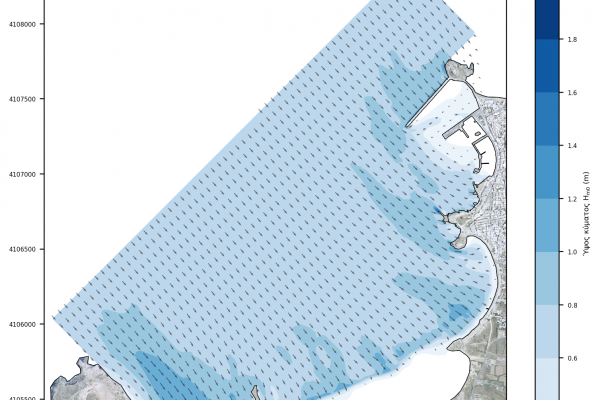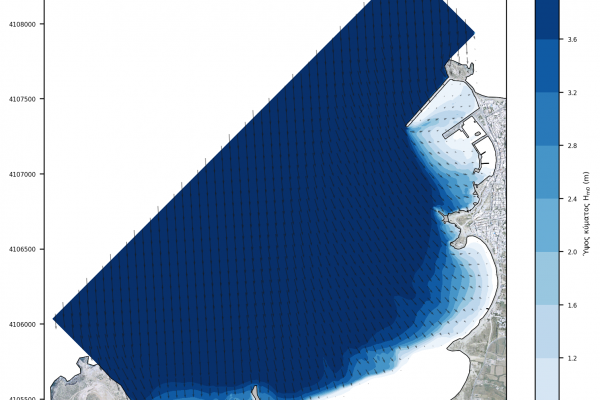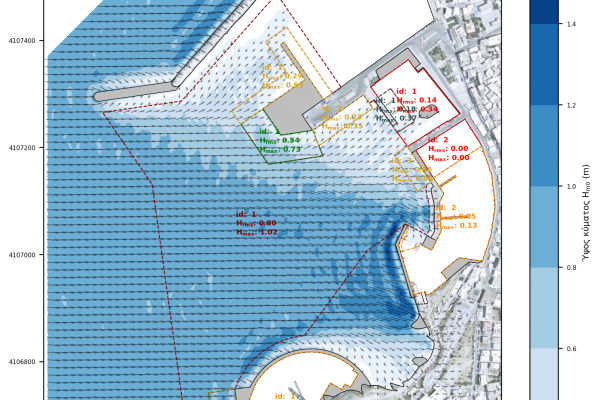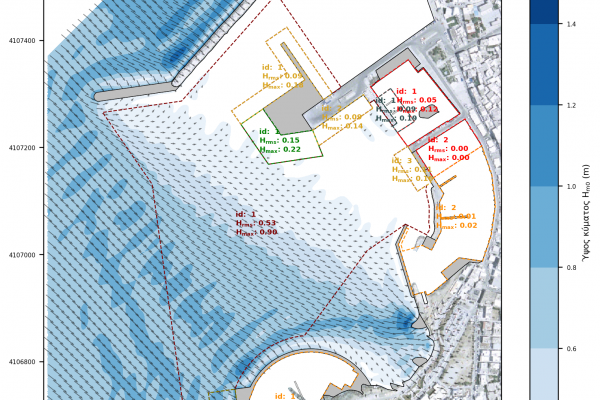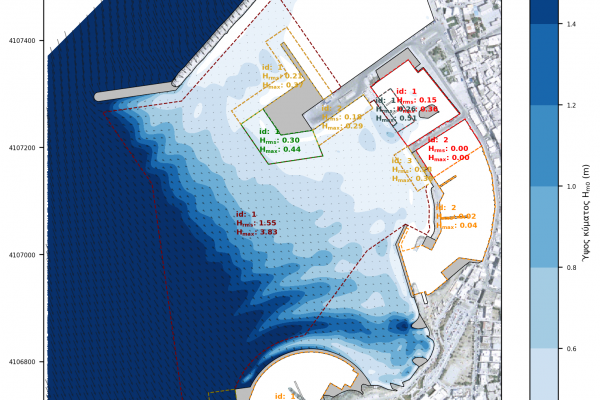Wave disturbance study for Naxos Port Development Framework
The Wave disturbance study is complementary to the project entitled " Framework for the development of the port of Naxos ", commissioned to CNWAY in August 2017.
Project scope
Wave disturbance analysis serves as a decision making tool which enables port layout optimization through the assessment of berthing conditions. The scope of the study is to investigate wave conditions in the alternative port layouts (as set out in the port development framework), assess how they compares with the existing conditions and assert that the proposed berthing facilities are acceptable from this standpoint.
Numerical modeling
Wave climate
Wave and wind data are derived from the WAMC4 and Skiron/Eta forecast model respectively. The relevant node is located offshore with coordinates as shown below:
- latitude of 37.100
- longitude of 25.350
The duration of the dataset covers the period between 2001 and 2010.
Modeling characteristics
The simulation is usually performed by employing two (2) separate models, the offshore and the wave disturbance model. The former extends from the position of offshore wave conditions (the node of the WAM wave model) up to the coastline, and its role is to prescribe boundary conditions to the wave disturbance model.
- Offshore model: It extends 3,3 km along the SW-axis and 2,2 km laterally. It covers an area of approximately 55,5 km2 and consists of 215.000 elements and 110.000 nodes
- Wave disturbance model: It extends 1930 meters along the N-axis and 900 meters laterally. It covers an area of about 1,2 km2 and consists of about 321,000 elements and 638,000 nodes.
A total of 23 wave cases were examined that correspond to 115 simulations. They consist of:
- 23 TOMAWAC simulations to propagate wave conditions from the WAMC4 regional model node to the project area
- 92 ARTEMIS simulations, for the calculation of wave disturbance, 23 for each wave case, 4 layouts (Existing layout, Layouts 1,2 and 3).
Results
For further analysis and objective comparison of the results, areas of interest have been defined for every layout. For each area, the following parameters have been calculated:
- Active (Ηm0(rms)) and maximum wave height (Hm0(max)) for absolute disturbance and
- Active (Ηm0(rms),), maximum (Hm0(max)) and minimum wave height (Hm0(min)) for differential disturbance
Absolute disturbance plots
Absolute wave disturbance plots show the results of each layout for each wave case, as derived from the simulation.
Differential disturbance plots
Differential wave disturbance plots result from the algebraic subtraction of the wave disturbance between the compared layouts. The "Reference Layout" disturbance is subtracted from the disturbance of the solution under consideration. Positive differential disturbance (red gradient), means the layout under consideration causes more disturbance than the reference layout whereas negative differential disturbance (blue gradient), means the layout under consideration causes less disturbance than the reference layout.
This easily identifies the positions as well as the extent to which each layout has an advantage / disadvantage over the "Reference layout". Below are selected examples of the differential wave disturbance of alternative layouts with respect to the Existing layout.
Qualitative evaluation
The score is calculated using an evaluation model that takes into account the following wave disturbance parameters for each zone:
- Active wave height (Hm0(rms)),
- Maximum wave height (Hm0(max)),
- Wave height exceeding predefined limits of allowable disturbance (Hm0(exc)),
- Zonal percentage area exceeding predefined limits of allowable disturbance (PAexc).

Conclusions
Based on the results of the wave disturbance analysis it can be concluded that wave disturbance in the existing port layout is overall tolerable. The proposed alternatives are aimed at reducing the wave climate thereby providing equal or lower wave disturbance compared to the existing port layout. Overall, Alternative 1 and 3 received the highest score and hence they are considered the optimum alternatives from a wave disturbance standpoint.
However, based on the results of the multi-criteria analysis which was undertaken in the context of the port development framework study, the preferred alternative is Layout 3.

